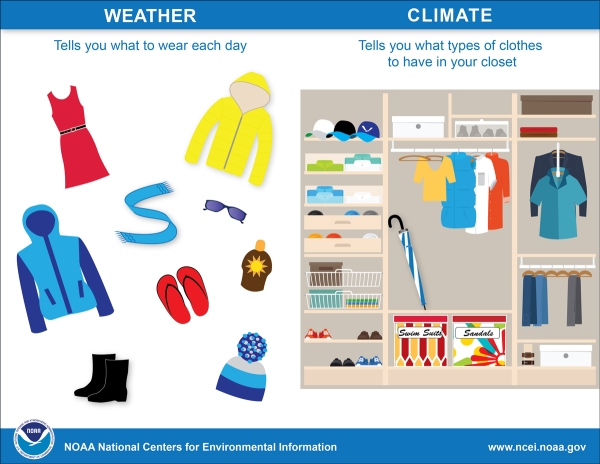Weather vs. Climate
While weather and climate are closely related, they’re not the same thing. Weather can be thought of as what you see out of your window every day, such as when it’s sunny, cloudy, rainy, or windy. Essentially, weather is what we see and feel in the short-term, over the span of minutes, hours, or even a couple of days.
On the other hand, climate describes what conditions are like for a specific area over a long period of time. To determine this, climate scientists look at averages of weather parameters such as rainfall, temperature, sunshine, wind speed, and others over a long period of time--typically 30 years. These long-term averages of weather observations are known as climate normals. Although the weather can change dramatically from day-to-day, long-term climate normals help scientists determine trends and patterns over the span of decades or more.
Climate provides a general idea of the conditions we can expect during a season or a year, but it doesn’t tell us what the weather will be like on any given day. For example, climate normals can tell us what the average high temperature is in Auckland during December, but it can’t tell us what the exact high temperature will be in Auckland on 15 December next year.
In short, climate is what we expect, while weather is what we get.

